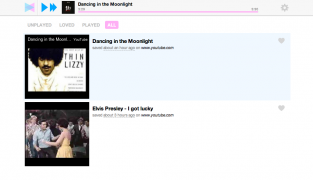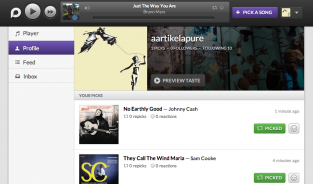Recently, my editor lamented the challenge of collecting music when we find and listen to it from so many different sources. Without a one-size-fits-all solution, we end up forgetting some of the music we’ve stumbled upon across services. Other times, we come across something we don’t have time to listen to, but want to check out later. Again, without a solid collection option, the song disappears into digital oblivion.
Sean Adams from Drowned in Sound and DiS readers stepped in and shared a bunch of methods they use to deal with the problem of digital-age music collection. The list includes some great ideas, but we began our own hunt for the most efficient way to collect music. Here are some of the best bets we found so far:

1) Later.fm (web; free) installs a bookmarklet for saving music as you browse the web; then, you can listen to the collection you’ve harvested through its native music player. The app currently supports YouTube, SoundCloud tracks, and HTML5 audio, and will support audio from SoundCloud, Vimeo, Official.fm, and Bandcamp over the next few weeks. (Read our full review.)
2) Ivy (web; free), likewise, works by allowing you to save music with a bookmarklet, but it only works with YouTube. Why we like it anyway: It also lets you share a link with your friends so you can build collaborative playlists together. (Read our full review.)
3) Minilogs (web; free) offers three ways to save music on the web: clicking on a bookmarklet, using the Chrome extension, or entering a URL. Since you can enter a URL, you can grab music from YouTube, Vimeo, SoundCloud, as well as tracks from streaming sources like Rdio or Spotify (using the HTTP link for the song). Nice! Minilogs also includes a social component that lets you publish playlists on Facebook, Twitter, and Google+. You can even make playlists collaborative, as with Ivy, so friends can add to it. (Read our full review.)

4) Piki (web/iOS; free), the latest venture from the creators of Turntable.fm, is most known for making Pandora-like radio streams based on your friends’ music. However, the web version also includes a bookmarklet so you can collect songs from various sources to feed your music profile. While you can use the web app strictly as a music bookmarking tool, the fact that it is first and foremost a socially-powered music streaming service will affect your experience. Namely, you can’t listen to songs you collect. However, if you like the idea of listening to what friends collect, or if you’re one of Turntable.fm’s cult followers (we know you’re out there!), Piki is worth checking out. (Read our full review.)
5) If you’re a do-it-yourself type person, you might want to consider creating your own “Listen Later” blog. We found this step-by-step guide to building a music collection blog using Tumblr and a Firefox add-on. Customizable blog features let you avoid having a cookie-cutter music collection. Tumblr and Firefox are both optional, but if you go with another browser, you’ll need to stick with streaming or else find your own “download helper” for the browser of your choice, for leeching the tracks you like back off of your blog.
6) Then, there’s a mobile-only option, which is as-yet unreleased, so you might have to “collect” the URL in your calendar. Stash.fm, created at Music Hack Day @ MIT last November, will bring music collection across multiple sources to Android and iOS when it is released in about four months. Using the Rdio API for playback, the app will support an impressive list of sources — Spotify, SoundCloud, YouTube, Songza, Hype Machine, Shazam, and Google Play. We haven’t seen another mobile option like this, so it sounds like it’ll be worth the wait.
This article was written by Aarti Kelapure and originally appeared on Evolver.fm.

